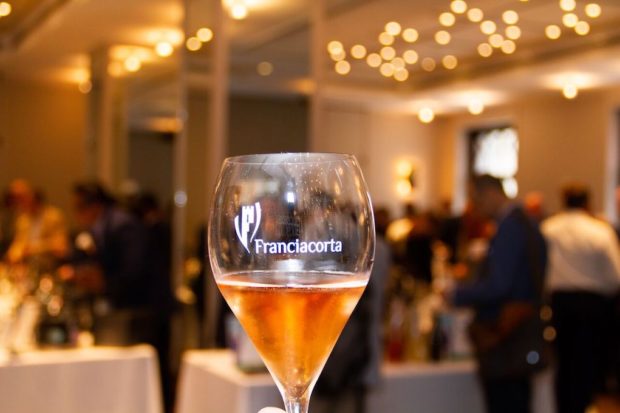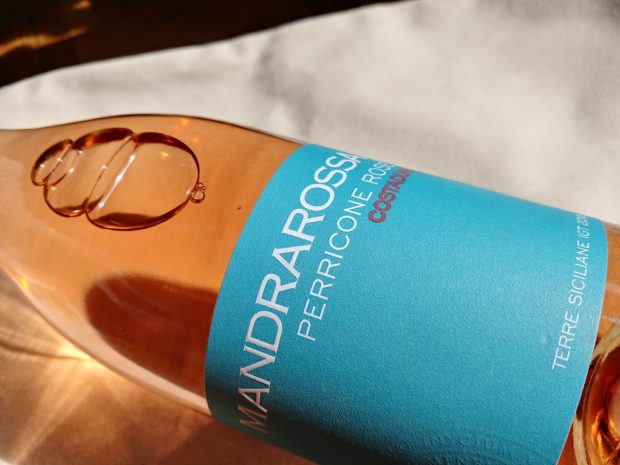Liberal Politics Yet Conservative Drinking
It is interesting to compare my political viewpoints with my longtime preferences for wine – I realize I am a liberal person who likes drinking with a conservative ideology at times; I’m sure I am not the only one. I typically do not like to label myself as any one category in my writing–or on the internet for that matter–as I feel in today’s divisive times, an expression of any type of affiliation with an ideology seems to come off as judgmental against those who have a different label. But a label or political view does not completely explain the nuances of my character and how I view others, or similarly, represent anyone else, just like our views about wine may be more intricate than simply saying we like one thing over another.
Focus on Native Varieties
Perricone is a native red grape variety of Sicily, which means that it has been there for at least 1,000 years. It was never extensively planted in the past because of its inconsistent yields, and in recent times, it has only gained a bit of popularity as a blending grape that would help bring more body and texture to those Sicilian reds that needed it. There has been a focus on these indigenous varieties not only in Sicily, as I learned during my last trip there in May of 2018, with 76 indigenous grapes currently in production– but all Italian vintners are deciding to place many of their regional local grapes at the forefront when it comes to promoting their wines.
It is interesting to see this shift as “Super Tuscans”–which use international varieties such as Cabernet Sauvignon and Merlot–were once heralded for their artistic open-mindedness while the dogma of only using Italian grapes was criticized. Conversely, there is now an outcry from those in the wine world to protect those native grapes that are at risk of becoming extinct and as there is a growing market for authenticity in wines, these once disregarded grapes now offer potential sales for wine producers.
Experiences Shape Our Ideology
It is fascinating to consider how our experiences have shaped our world. Many of us would like to think that we would be the same person regardless of our upbringing, but I wonder if that would be true of me. I came from a dysfunctional family with an absent father and a drug-addicted mother who only dealt with me when she needed to use me for something. When I came to New York City at the age of 18, I moved into a low-income, somewhat dangerous neighborhood, where the good, hardworking people banded together to help each other out; those people came from all over the world, they were Jewish, Muslim, Christian, atheist; some spoke English while others spoke various languages from a multitude of countries and cultures where they originated. And so, when there is a rise in xenophobia, I become extremely concerned, not out of a feeling of elitism, but out of a fear for those around me who helped me when I had no one else.
But I understand that perhaps, I might have felt differently had I been raised in a small community where I had a real family; a place where I was accepted and loved, where those who protected me and shaped me taught me to fear something that seemed different than the America I knew. I cannot say for sure if I would be the same person and so I know I cannot have judgment for those people who, despite wanting to be on the right side of history deep down, are fearful that they will be demonized and discarded because progress has passed them by.
Easy Road vs. Tough Road
No truly fair answer to these issues is an easy one as all the easy answers seem to discount the feelings and fears of one group. The difficult road of trying to live in a balanced world where we have international and native influences is one that can be complicated and explosive at times, hence it was put off so many times in the past. But we have gotten to the point where we cannot stop globalization and so there is a mad rush to protect everything being threatened by any means. I cannot truly understand what that feels like as the first time I felt accepted and at home was in a global setting, but I also know what it feels like to be unwanted and unaccepted from my childhood, and I wouldn’t wish that on anyone.
When it comes to Italian wines, I am certainly thrilled by all the native grapes that are finding new life and I personally feel that urgency to protect these varieties. But I cannot help loving a great example of an Italian wine made from international grapes such as an outstanding Franciacorta rosé (rosato) sparkling wine made from Pinot Nero (Pinot Noir) and Chardonnay, just like basking in the native beauty of a Perricone rosé (rosato) still wine gives me so much joy.

A Glass of Rosé
Many of these issues and conflicts just take time, time to listen, and perhaps most of us do not have that time as we are struggling to keep our heads above water. But that is where a glass of rosé comes into the picture with long summer days ahead, whether in the country, at the beach, or the gritty city streets, we can take the time to talk to those in our lives that have different world views than us; drinking a Perricone rosé wine and talking about how nice it is that there is a new focus on this native grape, albeit difficult to grow, because its home is in Sicily. Then, as we drink we both realize that everyone needs to feel useful and wanted and it is a horrible feeling when that it is not the case, whether it is someone having their home taken away or someone that has never felt at home. And we both agree that just because someone (or something) is considered difficult in light of the changes in the world doesn’t mean it is right to toss him away. It is amazing how the world can find harmony over a glass of rosé.
Everyday Drinking Wine (less than $15)
2018 Mandrarossa, Perricone, Rosé Costadune, Terre Siciliane IGT, Sicily, Italy ($12): 100% Perricone. It may seem odd to hardcore Italian wine lovers to call this a rosé instead of a rosato but for export purposes, the name rosé is more widely recognized on the label. This wine is an incredible value at only 12 bucks and it delivers so much. Sweet red fruit on the nose with hints of fennel seeds, a dry palate and a nice background of minerality and fresh acidity that was balanced by the fleshy mid-palate.


Special Occasion Wine (from $15 to $50)
2018 Bertani, ‘Bertarose’, Verona IGT, Veneto, Italy ($16): A rosé (rosato) blend of 75% Molinara (native of Verona) and 25% Merlot (international). The high acidity and fruit expression of Molinara comes through combined with pretty floral notes that I am guessing came from the Merlot, with a linear body and a lemon peel, chalky finish; a native and international variety living in harmony. Another great value wine.
Fantasy Wine (over $50)
NV Ca’ del Bosco, Franciacorta Cuvée Prestige Rosé, Franciacorta DOCG, Lombardy, Italy ($65): 80% Pinot Nero and 20% Chardonnay. The term Pinot Nero is used sometimes in Italy as Pinot Noir because it has existed in some of the northern areas so long that it is considered a traditional variety in certain regions. But Franciacorta is a wonderful example of how Italy has taken international varieties and made them their own. This traditional sparkling wine has a beautiful salmon color with an enchanting nose of pressed flowers and wild strawberries with hints of spiced toast; elegant body with fine bubbles that have a good backbone of acidity with intoxicating aromas of orange blossoms and marzipan on the expressive finish.












